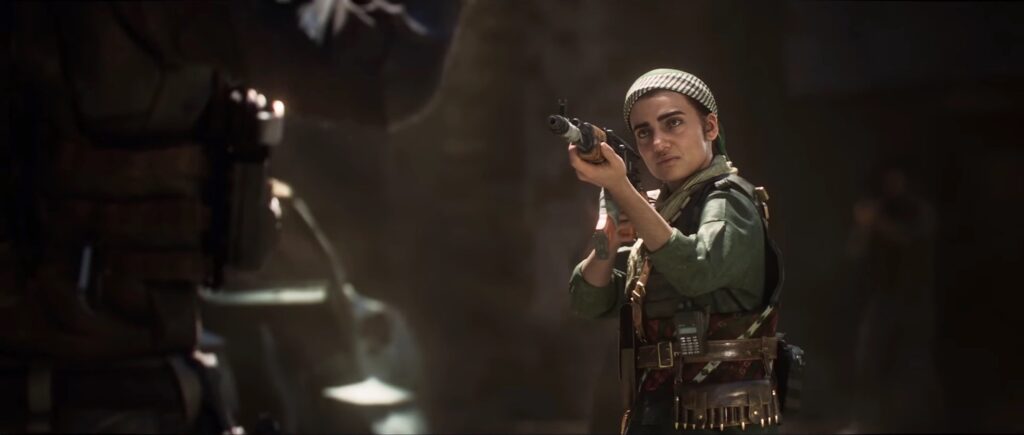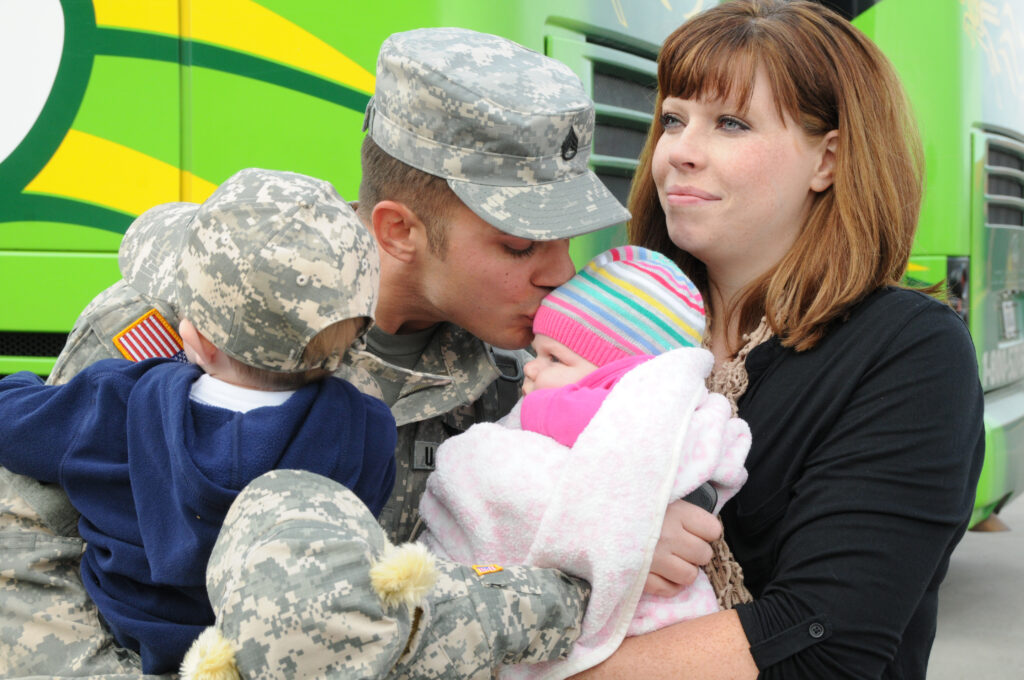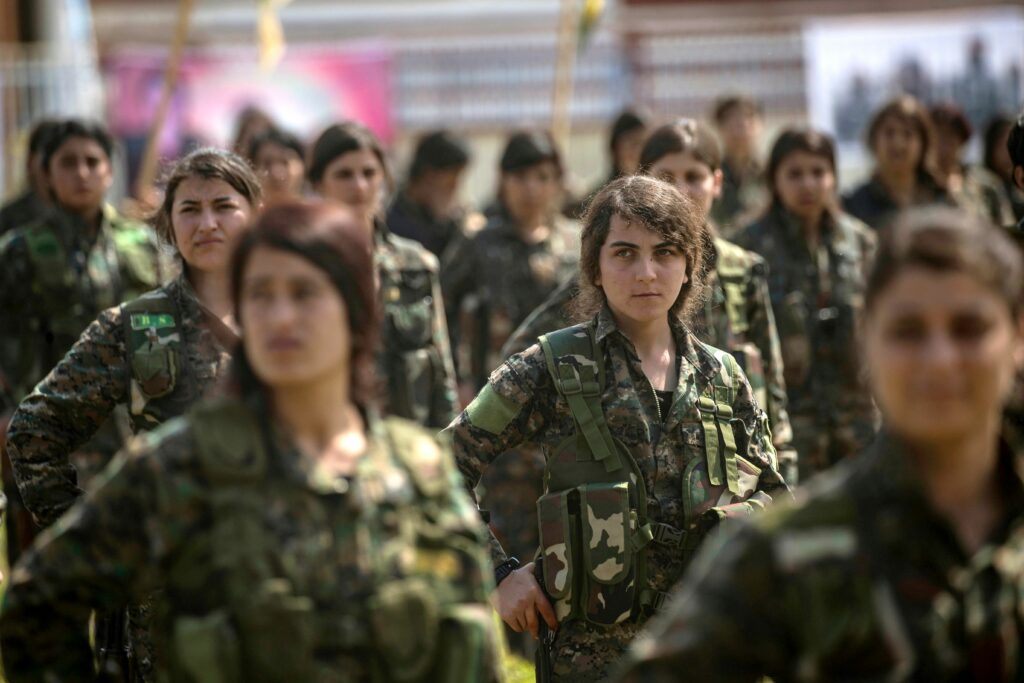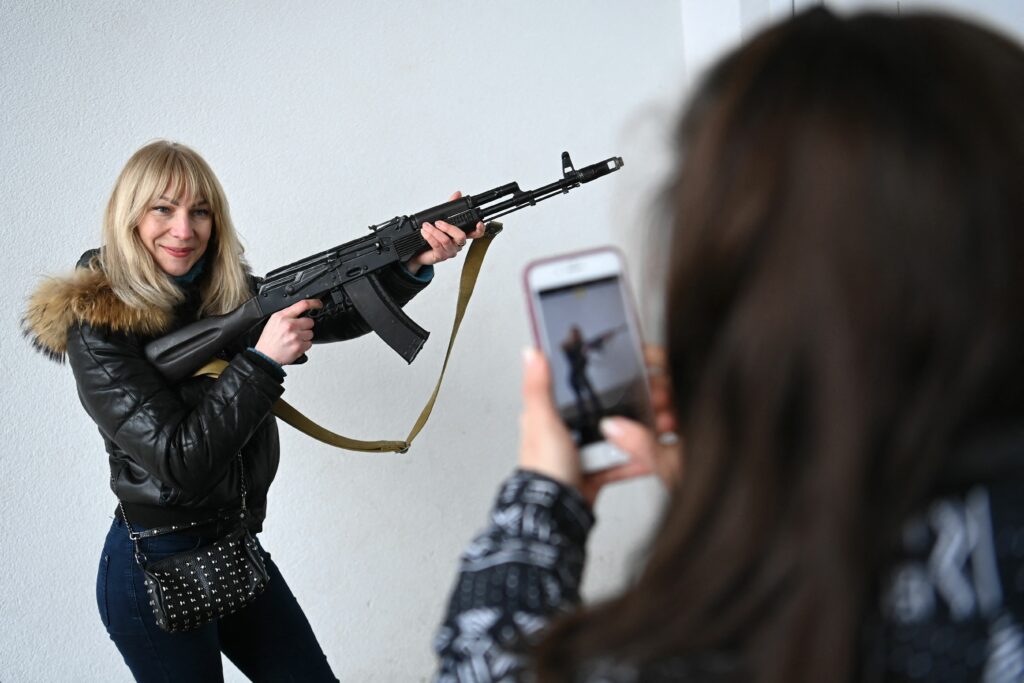When Women Answer the Call of Duty

In 2019, the video game Call of Duty: Modern Warfare rolled out its first single-mode playable woman character. Grab your controller, and you get to grow up as Farah Karim—fighting off attackers with a screwdriver as a young girl, struggling through graphic waterboarding, and then wielding an AK-47 against extremist invaders as a leader of the fictional Urzikstan Liberation Force. Farah’s resilient and brave. More importantly, though, Farah’s a good woman fighting for a good cause: freedom.
In recent decades, global media has bombarded readers with images and stories of women in war. Israeli women soldiers sporting duck faces and fatigues, Zapatista women with balaclavas and colorful dresses, and veiled women from ISIS (a.k.a. Daesh) posing with cars and guns have all graced the front pages of news outlets and been circulated widely on social media. Most recently, brave Ukrainian women—“not afraid of death” in their fight against Russian invaders—have been heavily featured in the media.
These women—from such different places, fighting for such different causes—may have little in common. Yet, women with guns, no matter where they’re from, often generate oddly similar reactions from U.S. and European audiences: enthusiasm, intrigue, or at the very least, morbid curiosity.
Read on, from the archives: “Busting Myths About Sex and Gender.”
As an anthropologist, I’ve interviewed international military personal in the Americas, Eastern Europe, and the Middle East, specifically exploring how gender and violence work together. I’ve also followed how these larger conversations about women and war circulate in popular culture, including in the news and on social media. I have found that, in the U.S. and beyond, our understandings of war often recycle gendered and racialized ideas of who is violent and why.
Popular culture frequently paints men as “naturally” violent, brave protectors. They’re the only ones capable of defending the motherland from threats (usually posed by other men). Women, by contrast, get portrayed as weaker and peaceful, merely in the backdrop of violence.
As perpetual civilians, suffering women and children can evoke pity, support, and admiration. A photo of a mother’s grief might resonate with a viewer’s own intimate connections. The heteronormative patriotism of women kissing men in uniform might remind some of the sacrifices we are told our safety requires. Stories of ordinary women gathering supplies, cooking meals for fighters, and hiding children tend to invoke feelings of solidarity and sympathy.
But women going into combat themselves? That’s a whole different game. Their involvement shows us that a situation is desperate: A mama bear only fights when the cubs are in danger—but when poked, she’ll get you.
When women take up arms, in other words, it seems to justify war. The spectacle of their presence tells people that the fight must be urgent—and, more importantly, righteous.
In 2014, while I was studying the relationships between U.S. military forces and Afghan, Iraqi, and Kurdish troops, Kurdish militias fighting ISIS in northern Syria captured international attention. The women’s division, the YPJ, attracted specific interest. Photos showing beautiful Kurdish women with guns dancing, laughing, and shooting appeared alongside articles detailing horrific battles led by “savage” extremist invaders. U.S. soldiers I worked with praised these women as democratic saviors of a backward Middle East.
In the years that followed, YPJ fighters became synonymous with Kurdish sovereignty and women’s rights in northern Syria, or Rojava, as the area is commonly known. International media outlets glorified their work. Kurdish diasporic communities in Europe and North America praised them. NATO forces and nongovernmental organizations found them a cause worth endorsing. From the military I worked with stateside to Iraqis and Kurds I hung out with in Iraq, I was overloaded with descriptions that highlighted Syrian Kurdish women’s bravery, fearlessness, and pure motives.
Part of this allure relies on how women fighters can appear as bodies out of place. While women have a long history of involvement in global struggles, their inclusion in formalized military units has always been tenuous. Only in the first half of the 20th century were women in many countries more readily invited into non-combat national military service.
However, permission to participate in direct “combat” has been much slower. The U.S. only permitted participation in 2013. Even Israeli forces, widely heralded for their gender equality, have been slow to admit women to many positions. Today full integration is still held up in many countries by fears that women may femininize war or distract their male counterparts.
The relatively rare presence of women in combat, therefore, helps paint a cause as necessary and righteous.
Just as Kurdish women standing up to ISIS were seen by many as inspiring liberators of their people, Ukrainian women fighters have similarly been portrayed as democratic defenders. When Russia pushed into Ukraine in early 2022, photos of former Miss Ukraine Anastasiia Lenna flooded social media. Armed with impeccable hair and trigger discipline, Anastasiia was said to have “traded her high heels for combat boots.” Her presence joined other media stories highlighting Ukrainian women pulled by love, family, and righteous anger toward the frontlines. It didn’t really matter that Anastasiia wasn’t actually joining the fight, nor that her gun was just an airsoft rifle.
The idea of her, a beautiful woman drawn to the fight, made Ukraine’s battle that much more just.
Women’s activism and resistance in the face of oppression can fuel amazing things—including new forms of international feminist solidarity. Some see women soldiers as the frontline for political struggles and may argue that praising them advances gender equality.
However, context matters. And the kinds of stories we in the U.S. and beyond tend to tell about women fighters can entrench existing stereotypes about gender, as well as race, religion, class, and other markers of identity.
As deserved as it may be, the laudatory news coverage of Kurdish women in Syria played on Orientalist, anti-Muslim biases by seeming to confirm stereotypes about gender dynamics in the Middle East. Brown women were presented as homogenous oppressed victims in need of rescuing, while Brown men were often viewed as extremist, violent perpetrators upholding backward, immoral customs and traditions.
This pattern is nothing new. Ideas about “women’s rights” and “gender equality” have often been employed to justify military occupation and invasion. Decades ago, theorist Gayatri Chakravorty Spivak explained the overlap of colonialism and women’s rights as “white men saving brown women from brown men.” The quote originally referenced the British colonial government using “oppressed” Indian women to justify imperial violence. But the case isn’t unique. After 9/11, U.S. president George W. Bush and British Prime Minister Tony Blair employed the same logic when they used the liberation of Afghan women as justification to launch a war.
Yet as sociologist and activist Dilar Dirik and other Kurdish scholars have repeatedly argued, projecting preconceived ideas onto armed women defenders is not the same as investing in their movement.
When women are depicted as victims in need of saving by outsiders, then women fighting to save themselves becomes the ultimate act of desperation—and heroism.
This narrative can make women—whether fighting or being fought over—into disposable characters. Women combatants, for their part, receive broad support from European and North American audiences only if they seem to champion democratic values, like the Kurdish women celebrated for appearing secular and freedom loving. Yet, in the Kurdish case, such a celebration sweeps away the complexities of Rojavan politics—including the YPG’s ties to the PKK (a group labeled as terrorists by some countries) and their military training of children. [1] [1] The YPJ is the sister militia of the YPG. Beautiful or kick-ass women fighters may garner momentary public support, but that kind of surface-level engagement with their struggles also glosses over difficult and layered political realities.
Call of Duty’s Farah is no exception. Pictured against a photo of her mother in hijab, Farah wears only a scarf as she tells players that women aren’t just fighting foreign occupation, they’re liberating their own people “from old-fashioned ways.” She assures players, “We are rescuers, not killers.”
Her 2019 game debut was hailed by many as a salute to the Kurdish democratic struggle. Yet the Call of Duty game developers intentionally kept their geographic references vague. While other characters come from real-world countries, including the U.S., the U.K., and Russia, Farah is the only one from a fictional homeland. The invention of Urzikstan, an ambiguously Middle Eastern, Arabic-speaking land, was strategic, according to the developers: “We just didn’t want to get wrapped up in the politics of any specific real-world country,” they explained in an interview. The developers wanted, instead, to be able to focus on “emotionally impactful narrative moments [and] exciting gameplay moments,” without being bogged down in the actual political complexities.
It’s the problem all featured women fighters face. When it boils down to it, they don’t often get to be nuanced or politically complex: just armed, exciting for audiences, and unambiguously “good.”




































